#keith hitchcock
Explore tagged Tumblr posts
Photo
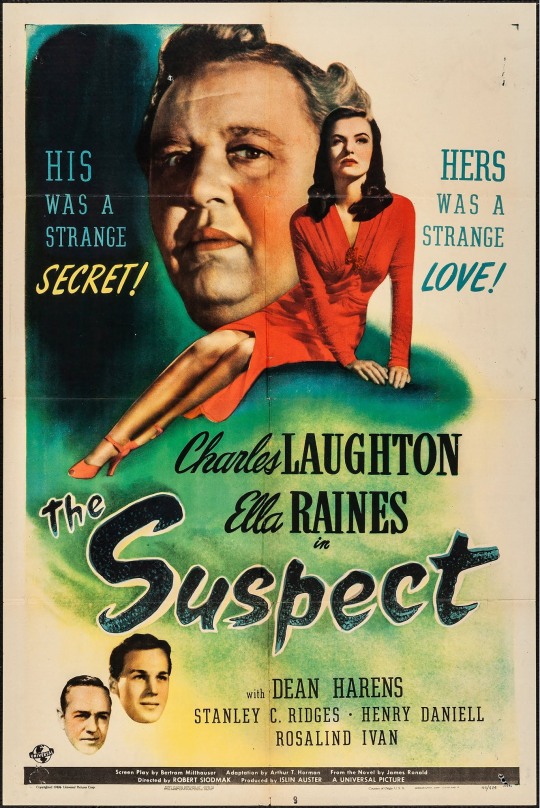
#the suspect#charles laughton#ella raines#dean harens#Stanley C. Ridges#henry daniell#rosalind ivan#keith hitchcock#robert siodmak#1944
17 notes
·
View notes
Text

The Trouble with Harry.
17 notes
·
View notes
Text
“Keith and I watch a lot of Turner Classic Movies (TCM) like couch potatoes.”-Patti Hansen, 2010
“I live in TCM [Turner Classic Movies] world."-Charlie Watts, 2010
"Two nights ago, I really pissed off my old lady because I stayed up all night watching Sherlock Holmes movies that were on a roll. Silent movies I love. I write music to them. I love classic film. D.W. Griffith. Hitchcock. William Wellman. I mean, should I go on? I know my movies."-Keith Richards, 2008
43 notes
·
View notes
Text

TCMFF Day 2
Two neo-noirs today at Grauman’s Chinese, SILENCE OF THE LAMBS with special guest Jodie Foster, 2:15 PM and SE7EN with Eddie Muller and David Fincher in conversation, 9:45 PM. Eddie will also introduce REAR WINDOW, 6:15 PM at @am_cinematheque Egyptian as well as THE BELLBOY with star Jerry Lewis’ son Chris Lewis at the @chinesetheatres Multiplex, House 6, 8:45 PM.
REAR WINDOW
(1954): A wheelchair-bound photographer passes the time of his disability by spying on his neighbors. One day he witnesses a murder. Or does he? This iconic mystery was adapted from a story by Cornell Woolrich and earned a Best Writing, Screenplay Oscar nomination for screenwriter John Michael Hayes. The film earned three more Oscar nods for Best Director, Best Cinematography, Color and Best Sound, Recording. Dir. Alfred Hitchcock
PLUS

The criminally minded may also enjoy the three prison films playing today, all at TCL Multiplex, House 4, Raoul Walsh’s THE BIG HOUSE, 3 PM; John Ford’s THE PRISONER OF SHARK ISLAND, intro by Keith Carradine, 6 PM; JAILHOUSE ROCK starring Elvis, 9 PM, intro by Allison Anders.
#eddie muller#neo noir#film noir#tcmff#tcmff 2024#tcl#grauman’s chinese theatre#david fincher#the big house#the prisoner of shark island#jailhouse rock#se&ven#elvis#jodie foster#silence of the lambs#rear window
7 notes
·
View notes
Text
Murder, She Wrote guest stars on ‘Ship of Thieves’

Jane Withers- child actor known best for films in the 1930s and 40s. A few of those: Bright Eyes, Shooting High, Ginger, This is the Life, Paddy O’Day, Pepper, Angel’s Holiday, Rascals, We’re in the Army Now, Golden Hoofs. Later credits: Giant, The Alfred Hitchcock Hour, Summer Playhouse, The Love Boat, Hart to Hart, Hunchback of Notre Dame Disney animations. Second of two appearances.

Lee Meriwether mainly remembered for science fiction/fantasy cult shows and films in the 1960s- including Batman: The Movie (1966) and Batman tv show (1967), ST:TOS, The Time Tunnel, Land of the Giants. Other things you might recognise her from: Dragnet, Dr Kildare, The Man from U.N.C.L.E., Perry Mason. The Fugitive (1966) Mission Impossible (TV), Love American Style, Barnaby Jones, The Love Boat. This is her second of three appearances.
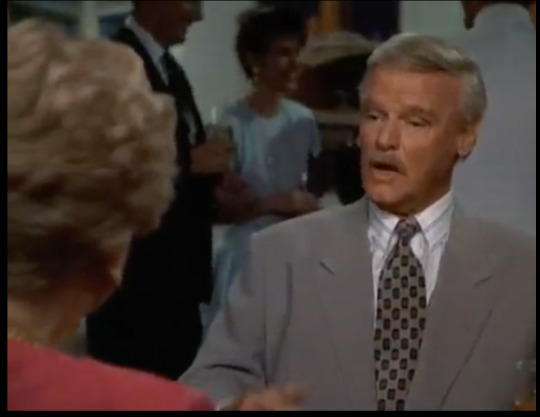
Keith Mitchell - an Australian actor primarily in UK/AUS projects. Known for The Hellfire Club, Withering Heights (1962), Seven Seas to Calais, BBC Play of the Month, The Six Wives of Henry VIII, Henry VIII and his Six Wives, BBC Television Shakespeare, and the Prince and the Pauper. This is his last of 9 appearances— unlike most MSW guest stars, he plays the same character throughout.
9.20 Episode aired May 2, 1993
#keith mitchell#lee meriwether#jane withers#murder she wrote#Bright Eyes#Shooting High#Ginger#This is the Life#Paddy O’Day#Pepper#Angel’s Holiday#Rascals#We’re in the Army Now#Golden Hoofs#The Hellfire Club#Withering Heights (1962)#Seven Seas to Calais#BBC Play of the Month#The Six Wives of Henry VIII#Henry VIII and his Six Wives#BBC Television Shakespeare#Batman: The Movie (1966) and Batman tv show (1967)#ST:TOS#The Time Tunnel#Land of the Giants#Dragnet#Dr Kildare#The Man from U.N.C.L.E.#Perry Mason. The Fugitive (1966) Mission Impossible (TV)#Love American Style
2 notes
·
View notes
Text

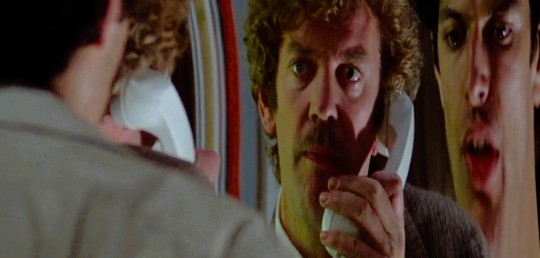
INVASION of the BODY SNATCHERS (1978) written by W.D. Richter (from the novel by Jack Finney) produced by Robert Solo directed by Philip Kaufman starring Donald Sutherland Brooke Adams Leonard Nimoy Jeff Goldblum Veronica Cartwright Art Hindle cinematography by Michael Chapman edited by Douglas Stewart music by Danny Zeitlin

JAWS (1975) written by Carl Gottlieb (from the novel by Peter Benchley) produced by Richard D. Zanuck and David Brown directed by Steven Spielberg starring Roy Scheider Robert Shaw Richard Dreyfus Lorraine Gary Murray Hamilton Carl Gottlieb cinematography by Bill Butler edited by Verna Fields music by John Williams

E r a s e r h e a d (1977) written, directed and produced by David Lynch starring Jack Nance Charlotte Stewart Allen Joseph Jeanne Bates Judith Roberts Laurel Near Jack Fisk cinematography by Frederick Elmes Herbert Caldwell edited by David Lynch sound design by Lynch w/ Alan Splet special effects by Lynch w/ Frederick Elmes
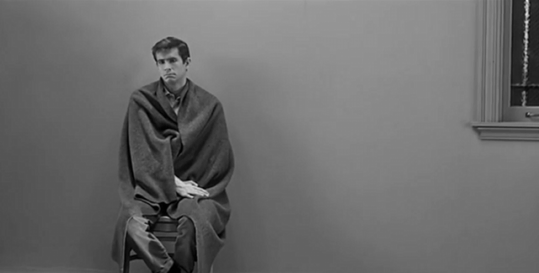
P s y c h o (1960) written by Joseph Stefano (from the novel by Robert Bloch) directed and produced by Alfred Hitchcock starring Anthony Perkins Vera Miles John Gavin Janet Leigh Martin Balsam Simon Oakland cinematography by John L. Russell edited by George Tomasini music by Bernard Hermann
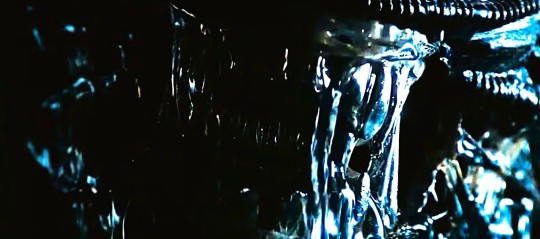
A L I E N (1979) written by Dan O'Bannon (story by Dan O'Bannon and Ronald Sushett) directed by Ridley Scott produced by Gordon Carroll David Giler Walter Hill starring Tom Skerritt Sigourney Weaver Veronica Cartwright John Hurt Harry Dean Stanton Yaphet Kotto Ian Holm cinematography by Derek Vanlint edited by Terry Rawlings music by Jerry Goldsmith
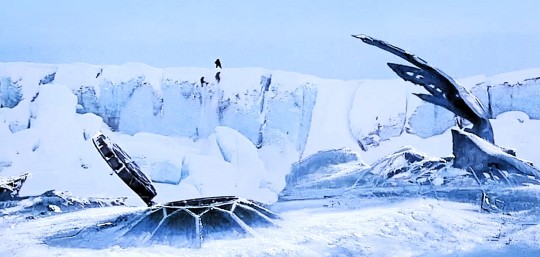
John Carpenter's The THING (1982) written by Bill Lancaster (from the novella "Who Goes There?" by John W. Campbell) directed by John Carpenter produced by David Foster Lawrence Turman Wilbur Stark starring Kurt Russell A. Wilford Briley T.K. Carter David Clennon Keith David Richard Dysart Charles Hallahan Peter Maloney Richard Masur Donald Moffat Joel Polis Thomas Waites cinematography by Dean Cundey edited by Todd Ramsay music by Ennio Morricone
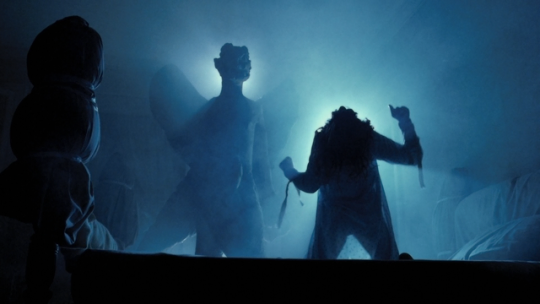
The Exorcist (1973) written by William Peter Blatty (from his novel) directed by William Friedkin produced by William Peter Blatty Noel Marshall David Salven starring Ellen Burstyn Max Von Sydow Jason Miller Lee J. Cobb Jack MacGowran Kitty Winn Mercedes McCambridge Linda Blair cinematography by Owen Roizman edited by Norman Gay Evan Lottman music by Jack Nitzche "Tubular Bells" by Mike Oldfield

R e p u l s i o n (1965) written by Roman Polanski Garard Brach screenplay adaptation by David Stone directed by Roman Polanski produced by Gene Gutowski starring Catherine Deneuve Ian Hendry John Fraser Peter Wymark Yvonne Furneaux cinematography by Gilbert Taylor edited by Alastair McIntyre music by Chico Hamilton

THE SHINING (1980) written by Diane Johnson Stanley Kubrick (from the novel by Stephen King) directed by Stanley Kubrick produced by Stanley Kubrick w/ Jan Harlan starring Jack Nicholson Shelley Duvall Danny Lloyd Scatman Crothers Barry Nelson Philip Stone Joe Turkel cinematography by John Alcott edited by Ray Lovejoy music by Wendy Carlos Rachel Elkind

Night of the Living Dead (1968) written by John Russo George A. Romero directed by George A. Romero produced by Karl Hardman Russell Streiner starring Duane Jones Judith O'Dea Karl Hardman Marilyn Eastman Keith Wayne Kyra Schon Judith Ridley cinematography by George A. Romero (uncr.) edited by George A. Romero (uncr.) Hugh Daly

Bram Stoker's Dracula (1992) written by James V. Hart (from the novel by Bram Stoker) directed by Francis Ford Coppola produced by Francis Ford Coppola Charles Mulvehill Fred Fuchs Michael Apted Robert O'Conner starring Gary Oldman Winona Ryder Anthony Hopkins Keanu Reeves Cary Elwes Richard E. Grant Billy Campbell Sadie Frost Monica Belluci Tom Waits cinematography by Michael Ballhaus edited by Anne Goursaud Glen Scantlebury Nicholas C. Smith music by Wojciech Kilar

TWIN PEAKS fire walk with me (1992) written by David Lynch Robert Engels (from the television series created by David Lynch and Mark Frost) directed by David Lynch produced by David Lynch Mark Frost Gregg Fienberg Johanna Ray John Wentworth starring Sheryl Lee Ray Wise Moira Kelly Grace Zabriskie Chris Isaak Kiefer Sutherland David Lynch Miguel Ferrer Harry Dean Stanton David Bowie Michael J. Anderson Frank Silva Al Strobel Jurgen Prochnow Dana Ashbrook James Marshall Frances Bay Catherine E. Coulson Kimberly Ann Cole Walter Olkewicz Lenny Von Dohlen Madchen Amick Peggy Lipton Julee Cruise Kyle Machlachlan cinematography by Ron Garcia edited by Mary Sweeney music by Angelo Badalamenti

Let the Right One In (2008) written by John Ajvide Lyndqvist (from his novel) directed by Tomas Alfredson produced by Frida Asp starring Kare Hedbrant Lina Leandersson Per Ragnar Henrik Dahl Ika Nord cinematography by Hoyte Van Hoytema edited by Tomas Alfredson Dino Jonsater music by Johan Soderqvist

W A R of the W O R L D S (2005) written by Josh Friedman David Koepp directed by Steven Spielberg produced by Kathleen Kennedy Damian Collier Paula Wagner Colin Wilson starring Tom Cruise Tim Robbins Dakota Fanning Miranda Otto Justin Chatwin Amy Ryan cinematography by Janusz Kaminski edited by Michael Kahn music by John Williams

Hannibal (2001) written by Steve Zaillian David Mamet directed by Ridley Scott produced by Martha De Laurentiis Dino De Laurentiis Ridley Scott starring Anthony Hopkins Julianne Moore Ray Liotta Gary Oldman Frankie Faison Giancarlo Giannini Francesca Neri Zeljko Ivanek Hazelle Goodman cinematography by John Mathieson editing by Pietro Scalia music by Hans Zimmer

The Hunger (1983) written by Ivan Davis Michael Thomas (from the novel by Whitley Strieber) directed by Tony Scott produced by Richard Shepherd starring Catherine Deneuve Susan Sarandon David Bowie Cliff De Young cinematography by Stephen Goldblatt edited by Pamela Power music by Michel Rubini Denny Jaeger

DON'T LOOK NOW (1973) written by Allan Scott Chris Bryant (based on the novella by Daphne Du Maurier) directed by Nicholas Roeg produced by Peter Katz starring Donald Sutherland Julie Christie Hilary Mason Clelia Matania Renato Scarpa cinematography by Anthony Richmond editing by Graeme Clifford music by Pino Donnagio

Prisoners (2013) written by Aaron Guzikowski directed by Denis Villeneuve produced by Broderick Johnson Kira Davis Andrew A. Kosove Adam Kolbrenner starring Jake Gylenhaal Hugh Jackman Maria Bello Viola Davis Melissa Leo Terrence Howard Paul Dano cinematography by Roger Deakins edited by Joel Cox Gary Roach music by Johann Johannsson

The Company of Wolves (1984) written by Neil Jordan Angela Carter (from the short story in Angela Carter's book "The Bloody Chamber and Other Stories") directed by Neil Jordan produced by Chris Brown Stephen Woolley starring Sarah Patterson David Warner Angela Lansbury Micha Bergese Stephen Rea cinematography by Bryan Loftus edited by Rodney Holland music by George Fenton

A Quiet Place (2018) written by Bryan Woods Scott Beck John Krasinski directed by John Krasinski produced by Michael Bay Andrew Form Brad Fuller starring Emily Blunt John Krasinski Millicent Simmonds Noah Jupe Cade Woodward cinematography by Charlotte Bruus Christensen edited by Christopher Tellefsen music by Marco Beltrami

W O R L D W A R Z (2013) written by Matthew Michael Carnahan Drew Goddard & Damon Lindelof (from the novel novel by Max Brooks) directed by Marc Forster produced by Brad Pitt Dede Gardner Jeremy Kleiner Ian Bryce starring Brad Pitt Mireille Enos Daniella Kertesz James Badge Dale Peter Capaldi Pierfrancesco Favino Ludi Boeken Matthew Fox Fana Mokoena David Morse cinematography by Ben Seresin edited by Roger Barton Matt Chesse music by Marco Beltrami

LOST H i g h w a y (1997) written by David Lynch Barry Gifford directed by David Lynch produced by Mary Sweeney Tom Sternberg Deepak Nayar starring Bill Pullman Patricia Arquette Balthazar Getty Natasha Gregson Wagner Robert Loggia Robert Blake Michael Massee Jack Nance Henry Rollins Gary Busey cinematography by Peter Deming edited by Mary Sweeney music by Angelo Badalamenti

N e a r D a r k (1987) written by Kathryn Bigelow Eric Red directed by Kathryn Bigelow produced by Edward S. Feldman Steven-Charles Jaffe Charles Meeker starring Adrian Pasdar Jenny Wright Lance Henriksen Bill Paxton Jenette Goldstein Tim Thomerson cinematography by Adam Greenberg edited by Howard Smith music by Tangerine Dream
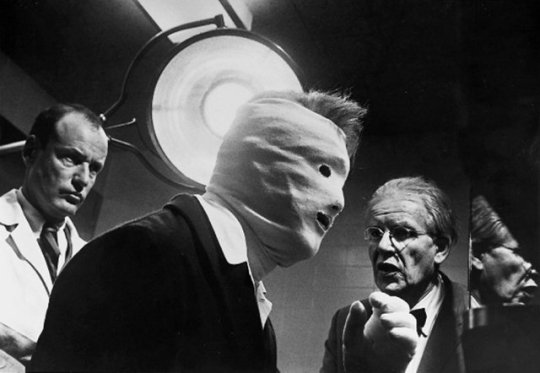
S e c o n d s (1966) written by Lewis John Carlino (from the novel by David Ely) directed by John Frankenheimer produced by John Frankenheimer Edward Lewis starring Rock Hudson Salome Jens John Randolph Will Geer Jeff Corey Murray Hamilton Frances Reid cinemtography by Tak Fujimoto edited by David Newhouse Ferris Webster music by Jerry Goldsmith

Nosferatu The Vampyre (1979) written by Werner Herzog w/ Tom Shachtman Martje Grohmann directed by Werner Herzog produced by Walter Saxer Werner Herzog Michael Gruskoff starring Klaus Kinski Isabelle Adjani Bruno Ganz Roland Topor Walter Landengast Martje Grohmann cinematography by Jorg Schmidt-Reitwein edited by Beate Mainka-Jellinghaus music by Florian Fricke Popol Vuh
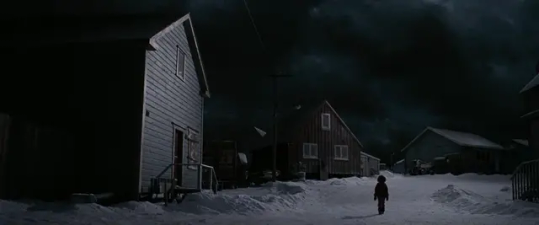
30 DAYS of NIGHT (2007) written by Steve Niles Stuart Beattie Brian Nelson (from the graphic novel by Steve Niles Ben Templesmith) directed by David Slade produced by Sam Raimi Robert Tapert starring Josh Hartnett Melissa George Danny Huston Ben Foster Mark Boone Jr. Amber Sainsbury Megan Franich Manu Bennett cinematography by Jo Willems edited by Art Jones music by Brian Reitzell

f r e a k s (1932) written by Willis Goldbleck Leon Gordon (from the short story "Spurs" by Tod Robbins) directed and produced by Tod Browning starring Wallace Ford Leila Hyams Olga Baclanova Roscoe Ates cinematography by Merritt B. Gerstad edited by Basil Wrangell
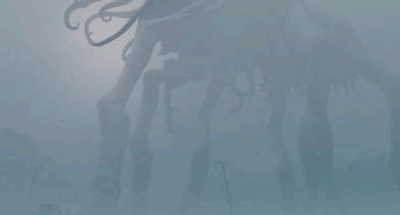
the M i s t (2007) written and directed by Frank Darabont (from the novella by Stephen King) produced by Frank Darabont Martin Shefer Liz Glotzer starring Thomas Jane Laurie Holden Marcia Gay Hardin Andre Braugher Toby Jones William Sadler Frances Sternhagen Jeffrey DeMunn cinematography by Rohn Schmidt edited by Hunter M. Via music by Mark Isham

Invasion of the BODY SNATCHERS (1956) written by Daniel Mainwaring (from the novel by Jack Finney) directed by Don Siegel produced by Walter Wanger starring Kevin McCarthy Dana Wynter Larry Gates King Donovan Carolyn Jones Jean Willes Ralph Dumke cinematography by Ellsworth Fredericks edited by Robert S. Eisen music by Carmen Dragon
3 notes
·
View notes
Text
Dressed to Kill

By the time he made DRESSED TO KILL (1980, TCM, Tubi), Brian De Palma was such an overt stylist his films seemed to take place in a hermetically sealed world with less connection to reality than to other movies. In this case, he’s mirroring Alfred Hitchcock’s PSYCHO (1960). Both feature a transgressive leading lady with whom we come to identify before she’s murdered at the end of the first act. Both end with a psychiatrist’s explanation of the plot’s psycho-sexual basis. And both resolve the mystery almost by accident as investigations of private spaces trigger the murderers to reveal their identities. There are also stylistic echoes in the way both directors use a moving camera to pull us in and rapid cutting for shock effect.
If PSYCHO is the superior film, it’s because it takes us deeper into its consideration of transgressive acts. Hitchcock transfers our sympathies to Norman Bates, suckering us in to identify with the film’s most destabilizing figure. De Palma transfers our sympathies to Nancy Allen’s Liz Blake, the world’s cutest high-priced call girl, who discovers Dickinson’s murder and has to find the real killer to clear her name. He gets in some good comic moments aimed at her and her profession — the client bragging about his stock portfolio who turns tail and runs at the sight of a dead body, Allen’s changing masks as she fields calls from her escort service and her stockbroker on two different phones, the client who can’t even acknowledge he called for her while she’s still in the hall outside his hotel room. But identifying with her doesn’t make us question the ways we invest in characters emotionally.

The film is still tremendously effective, particularly in the first half hour focusing on Kate Miller (Angie Dickinson) and her frustrating marital situation. Dickinson is totally committed to Kate’s emotional state. She easily pulls us into her fantasies, her flirtation with her psychiatrist (Michael Caine) and the wordless nine-minute sequence in which she and a handsome stranger cruise each other in an art museum. That scene is De Palma’s great tour-de-force in the film. Kate is in a room with sexualized paintings as she watches a middle-aged man come on to one of the patrons and a couple cuddling as they look at the art works. It’s all sensuality, and he builds suspense so that we’re actually rooting for her to score a one-night stand. There’s a lot of good work in the rest of the film, and De Palma keeps the tension up as the killer stalks Allen, the one witness to Dickenson’s murder. Keith Gordon is particularly appealing as Dickinson’s son, who helps Allen search for the killer. Dennis Franz is the police detective putting pressure on Allen, and there are bits by Brandon Maggart and actor-playwright Samm-Art Williams.

#horror films#brian de palma#angie dickinson#nancy allen#keith gordon#dennis franz#michael caine#samm art williams
3 notes
·
View notes
Text











A Thousand Skies - Network Seven - October 9 - 23, 1985
Biographical Drama (6 Episodes)
Running Time: 60 minutes
Stars:
John Walton as Sir Charles Kingsford Smith
Andrew Clarke as Charles Ulm
Joss McWilliam as Keith Anderson
Celine Griffin as as Mary Powell-Kingsford Smith
Helen Jones as Bon Hilliard
Jane Menelaus as Thelma McKenna
Geoff Parry as Bob Hitchcock
Phyllis Burford as Kate Kingsford Smith
Richard Hutson as William Kingsford Smith
#A Thousand Skies#TV#Biographical Drama#Network Seven#1985#1980's#John Walton#Andrew Clarke#Josh McWilliam#Celine Griffin#Helen Jones#Jane Menelaius
2 notes
·
View notes
Text
1960s Movies Id on't care for
1960
Home from the Hill Robert mitchum, Eleanor Parker
Inherit the wind Spencer Tracy
Midnight Lace Doris Day, Rex Harrison
Let’s make love Marilyn Monroe,
Ocean’s 11 the rat pack
The Grass is Greener Cary Grant, Robert Mitchum, Deborah Kerr, Jean Simmons D: Stanley Donen
The Unforgiven Audrey Hepburn, Burt Lancaster, John Saxon D: John Huston
1961
The Children’s Hour Audrey Hepburn, Shirley MacLaine, James Garner D: William Wyler
The Deadly Companions Maureen o’hara brian keith
1962
The Lion William Holden, Capucine
Mr. Hobbs takes a vacation James Stewart, Maureen O’Hara
Boys’ night out Kim Novak, Tony Randall, James Garner
1963
Irma la Douce Jack Lemmon, Shirley Maclaine D: Billy Wilder
Spencer’s Mountain Henry Fonda, Maureen O’Hara
The VIPS Maggie smith, Richard burton, Elizabeth Taylor, Rod Taylor, Orson welles
Toys in the attic Dean Martin, Gene Tierney, Geraldine Page
1964
A Hard day’s night (CC) beatles
Father Goose Cary Grant, Leslie Caron
My fair lady Audrey Hepburn, rex Harrison
Night of the iguana Ava Gardner, Richard Burton, Deborah Kerr
The Americanization of Emily James Garner, Julie Andrews
1965
The Great Race* Natalie Wood, Tony Curtis, Jack Lemmon
The Rounders Henry Fonda, Glen Ford
The Art of Love Dick Van Dyke, James Garner, Angie Dickenson
36 hours Eva Marie Saint, James Garner, Rod Taylor
The nanny bette davis
1966
7 Women Anne Bancroft JOHN FORD
A man for all seasons
Any Wednesday Jane Fonda, Jason Robards, Dean Jones
Arabesque Gregory peck, Sophia Loren
Blow up (CC)
Penelope Natalie Wood
The Chase Robert Redford, Jane Fonda, Marlon Brando
Torn Curtain Julie Andrews, Paul Newman HITCHCOCK
The sand pebbles steve mcqueen
1967
Thoroughly Modern Millie Julie Andrews, Carol Channing, Mary Tyler Moore
Guess who’s coming to dinner Katharine Hepburn spencer Tracy
The graduate. Katharine ross, Dustin Hoffman, anne Bancroft
1968
Madigan Henry Fonda, Richard Widmark
The lion in winter Katharine Hepburn, Peter O’Toole
The Thomas crown affair Faye Dunaway, Steve McQueen
Bullit Steve McQueen
The legend of Lylah Clare Kim Novak,
Romeo and Juliet (CC)
Bandolero! James Stewart, Dean Martin, Raquel Welsh
1969
The wild bunch William Holden, Ernest Borgnine
The prime of miss jean Brodie Maggie smith Robert stephens
0 notes
Text
20000 días de posibilidades infinitas
x Chan Tejedor - originalmente publicado en Revista Invisibles Dos caras de la misma moneda, dos rockumentales que en realidad funcionan como ensayos sobre la memoria: 20000 Days on Earth y The Possibilities are endless. Desde la abundancia de recuerdos hasta la imposibilidad verbal de narrar, ambos exceden lo meramente documental, son imágenes-poesía, crean mundo como cualquier expresión artística debería hacer y reflexionan no sólo sobre la niñez, el amor, la capacidad creativa y el trabajo cotidiano sino también sobre la memoria.

Este año que termina no vi tantas películas, o tantas como las deseadas o la cantidad que estoy acostumbrada a ver. Vi apenas, al día de la fecha, unas 165 películas, la mayoría decepcionantes, pocos estrenos interesantes y aquellas que considero obras maestras fueron en realidad, clásicos que volví a ver. Pero recordaré el 2015 como el año en que, creo, vi la mayor cantidad de documentales de rock y música. Desde Cobain: Montage of Heck hasta The Wrecking Crew, pasando por Mr Blue Sky: The Story of Jeff Lynne & ELO, Filmage: The Story of Descendents/All, los documentales que vimos casi todos gracias a la comodidad de Netflix: Keith Richards. Under the influence y What Happened, Miss Simone? y varios más.
De todos ellos, destaco dos que son en realidad del año pasado (2014), producidos ambos por Pulse Films y Film4 Productions y con el apoyo del British Film Institute. Se tratan de 20,000 Days on Earth de Iain Forsyth y Jane Pollard, el docuficción sobre el día número 20000 en la vida de Nick Cave; y The Possibilities are endless de James Hall y Edward Lovelace, un ensayo artístico sobre cómo Edwyn Collins tuvo que reconstruir sus recuerdos, sus palabras, su identidad y hasta el habla, luego de un derrame sufrido en el 2005, que lo dejó en coma profundo y del que al despertar sólo decía Grace Maxwell (el nombre de su mujer, quien además es su manager) y The Possibilities Are Endless. Ambos exceden lo meramente documental, son imágenes-poesía, crean mundo como cualquier expresión artística debería hacer y reflexionan no sólo sobre la niñez, el amor, la capacidad creativa y el trabajo cotidiano sino sobre la memoria y -como ha definido Borges a los clásicos- sobre las posibilidades inherentes de hacer, en este caso, un documental. Son por lo tanto, me atrevo a decir, futuros clásicos. Obras maestras e infaltables en la videoteca de cualquier fanático, no sólo de la música, sino del cine.
-
En el afán de terminar de redondear un escrito comparado entre los dos films, hice el trabajo de ver las películas en synchro y me he encontrado varias sorpresas agradables. Prometo un futuro post con las casi 200 imágenes que capturé de las películas proyectadas al mismo tiempo, post al que lamentablemente le faltará el audio.
Las dos películas abren con el siguiente plano:

La televisación del recuerdo, Edwyn Collins en Late Night con Conan O’Brien, cantando su hitazo “A Girl like you”, y un wall de televisores que ametrallan en tan sólo unos segundos, los 20000 días en la Tierra vividos por Nick Cave. Queda claro desde el principio que la idea en ambos es hacer un skip al tipo de documental más obvio, brindando en menos de dos minutos iniciales (mucho menos que los 10 minutos que necesitaba Hitchcock), un zip de imágenes con la consigna tácita de “si quieren material de archivo, ya saben donde ir a buscarlo, porque lo que van a ver es algo completamente diferente” y lo es. Los directores de cada película están muy cercanos a sus objetos de estudio. Iain Forsyth y Jane Pollard son amigos cercanos de Cave y vienen trabajando con él desde hace aproximadamente 7 años, comenzaron haciendo un trabajo de método de imágenes al que inexorablemente, las palabras y el guión de Cave y Warren Ellis terminaron de dar forma a lo que sería un proyecto mucho más grande que el que se buscó originalmente. Por su parte, James Hall y Edward Lovelace eran fanáticos de Collins y Orange Juice, y también de Frederick Wiseman como referente de realizador documental. Enamorados de la historia por la que tuvo que atravesar Collins, le hicieron varias entrevistas de las que surgieron la composición de imágenes que traducirían el desafío de las posibilidades de contar la historia de una persona que prácticamente no puede hablar.
Contar a partir de un archivo respetuosamente guardado, con agentes del recuerdo que acceden a las fuentes con guantes de látex en el caso de Cave, un obsesivo que pudo atesorar su vida, sus palabras y sus verdades monstruosas en una especie de Biblioteca de Babel de los recuerdos; o contar desde el limbo, desde el vacío y con la gran ayuda de Grace, la guardiana oral de la historia de Collins. Dos caras de la misma moneda, dos rockumentales que en realidad eran ensayos sobre la memoria.

-"Qué es a lo que más le temes?” Le pregunta el analista de Cave en una sesión de terapia, y Cave contesta:
-“Hmm… Mi mayor miedo, supongo, es perder mi memoria. Me preocupa a veces que no vaya a ser capaz de seguir haciendo lo que hago y alcanzar un lugar con el que estoy satisfecho”
-”En qué sentido?”
-”Porque la memoria es lo que somos, creo que tu alma y tu razón de estar vivos está arraigada en la memoria. Quiero decir, creo que durante mucho tiempo he estado construyendo una especie de mundo a través de la escritura de canciones. Es una clase de mundo que se crea sobre la base de esos preciados recuerdos que definen nuestras vidas”

El mayor miedo de Cave es lo que le pasó a Collins en febrero del 2005 cuando sufrió dos hemorragias cerebrales que terminaron en una operación, período de coma y lenta recuperación de la memoria y el habla. Sufrió parálisis total del lado derecho, ya no puede tocar por sí solo la guitarra, aunque Grace lo ayuda a rasgar, tiene problemas para caminar, usa bastón y la afasia dificulta la pronunciación, hace que tartamudee y le conlleva severos problemas con los números y el pensamiento matemático. Collins también hace terapia, pero con un neurólogo, tuvo que aprender a escribir con la mano izquierda y recuperó sus dotes de ilustrador, tal cual había estudiado, a fuerza de dibujar aves, siguiendo la sugerencia de Grace, que lo notaba frustrado porque dibujaba repetidamente la figura de un hombre con parálisis, su propia figura. “Creo que mi recuperación real comenzó con mi primer dibujo de pájaros” dice Collins en su propia web.


Sin embargo, una solución al miedo de Cave, bien podría dársela Collins que siguió sacando discos y produciendo a otros artistas (el maravilloso disco Seven dials de su amigo íntimo Roddy Frame, ex Aztec Camera; por ejemplo) y que pareciera resumir, con la sencillez emocionante de sus letras que lo importante It's in your heart, Not in your mind, It's not in your mind.
A partir de la memoria se establece una idea de hogar “I’m Home again” canta Collins en el disco casi homónimo de 2007. Un verdadero punto de hogar fue volver a visitar el estudio West Health, fue la música y su ambiente el detonante necesario para un momento de recuperación acelerada en la terapia de Collins, simultáneamente en 20000 días en la Tierra, vemos a Warren Ellis con un coro de niños franceses grabando, también en estudios. En los estudios reviven las letras, las de Cave, rigurosamente escritas a máquina, las de Collins, con una caligrafía casi inicial. Hombre-Máquina y Hombre-Niño. La maquinaria de Cave para conservar esas letras que tanto hablan sobre la memoria y sobre el proceso disociado de creación. Las letras de sus canciones suponen de cierta manera, una verdad. La metáfora de la verdad dicha por Cave al final del documental, tan sólo la reflexión de esa metáfora, hace que 20000 días sobre la Tierra sea una película perfecta. Una metáfora de la verdad como monstruo que se asoma por la superficie del océano y deja ver su cresta, en un atisbo deja ver su cresta de verdad para luego sumergirse de nuevo en las profundidades, quizá para siempre. De las profundidades renace Collins, repitiendo apenas las palabras The possibilities are endless, las posibilidades son infinitas. El agua también termina siendo un contenedor y un conductor eterno de verdades. Qué hubiese dicho Bachelard con semejantes monstruos, no?


Y las verdades no funcionan por sí solas porque tienen centinelas y tienen asistentes infaltables: Las mujeres, sus grandes amores. Grace es básicamente la exteriorización del yo perdido de Collins “Puedo recordar a Grace, mi mujer, ella está haciendo que todo sea mejor. Ella es mi vida” dice Collins. Y con “es mi vida” descubrimos que es literalmente su vida ya que lo ayuda en absolutamente todo. En cambio Suzie, la mujer de Cave es una musa, apenas la podemos ver en el documental, durmiendo al principio de la jornada, soñando con algo que no podemos imaginar. Luego la volvemos a ver en una foto, proyectada mientras Cave la compara con Marilyn Monroe, Anita Ekberg y miles de símbolos sexuales más, en una secuencia imperdible, casi de lo mejor que tiene la película. Suzie es la madre de sus hijos mellizos, Arthur y Earl. A Arthur, quien murió en julio de este año en un episodio de alucinación por LSD cayendo desde un barranco, se lo ve comiendo pizzas abrazado al padre. Si para Cave lo más importante de su vida es la memoria y la memoria está hecha de letras que guardan cada momento y Suzie es la musa que inspira gran parte de esas letras, entonces también para Cave, Suzie es su vida, aunque quizá es una versión del amor más icónica y no tan iconoclasta como la de Collins.
20000 días en la Tierra y Las posibilidades son infinitas plantean la apertura de lenguajes poéticos, narran no necesariamente vidas, sino formas de vidas, las vidas de dos artistas únicos, irremplazables y eternos por el solo hecho de habernos regalado verdad. Y sólo las personas generosas pueden regalar verdades.


0 notes
Text
Nevada Smith (Henry Hathaway, 1965)
Henry Hathaway es un veterano. Nació en 1898 y desde los treinta y cuatro años ha dirigido 56 películas. Siempre ha sido un honesto artesano, alternando lo mediocre con lo interesante. Curiosamente, se mantiene joven y activo; sus mejores películas son las más recientes: Del infierno a Texas, Alaska, tierra de oro, La conquista del Oeste (tres episodios), El fabuloso mundo del circo, Los cuatro hijos de Katie Elder, y sobre todo Nevada Smith (1965), que, sin ser una obra maestra, merece más atención que la que se le ha prestado.
Su origen literario (Los insaciables, The Carpetbaggers, de Harold Robbins), un trailer que intentaba presentar a Nevada Smith como un "Tom Jones del Oeste" y el ser su "productor ejecutivo" Joseph E. Levine (experto en remuneradores y escabrosos temas: Una casa no es un hogar, Harlow, El Oscar) me hicieron temer un derroche de mal gusto. Unas recientes declaraciones de Hathaway (''Yo nunca he hecho películas pornográficas y no tengo intención de empezar ahora") y Aldrich ("Un hombre como Hathaway tiene sin duda muchas debilidades, pero no puede decirse que sea un yes-man... hará lo que se le meta en la cabeza") y el que esté producida por Hathaway (sólo lo hace cuando le interesa mucho la película: Arenas de muerte, Alaska...) me devolvieron unas esperanzas que se han visto cumplidas, con creces, por el buen gusto, sensibilidad y sencilla elegancia con que Hathaway resuelve escenas tan difíciles como las dos (!) entradas de Suzanne Pleshette y las demás mujeres en la barraca de los presos, y las referentes a Janet Margolin (cf. sobre todo la planificación de la primera entrada de Suzanne y su encuentro con Steve McQueen, y la naturalidad con que están resueltas la primera y última escenas en que sale Janet).
Por otra parte, como Hathaway nunca ha sido un gran director de actores, pese a los notables resultados obtenidos de Diane Varsi y Don Murray (From Hell to Texas, 1958), Capucine (North to Alaska, 1960) y Carroll Baker (How the West Was Won, 1962), no tiene seguridad y necesita construir las secuencias a base de numerosos planos cortos, y esto lo hace de un modo rutinario y disgregador. En el mejor de los casos, Hathaway es un vigoroso narrador, con buen sentido del ritmo y de la composición en Cinemascope (pero sólo a nivel de plano). Su planificación destruye con frecuencia el tiempo, el espacio y la interpretación, y por eso sus películas suelen decepcionar en una segunda visión: siempre sobran unos doscientos cambios de plano, insertos innecesarios, etc. Pues bien, parece como si en Nevada Smith hubiera descendido sobre él esa serenidad de puesta en escena tan patente en los últimos films de los grandes viejos directores: Ford, Lang, Preminger, Hawks, Mizoguchi, Dreyer, Renoir, Walsh, Hitchcock, etcétera. En efecto, la planificación es medida y sosegada; en algunos casos (el final) extraordinaria, en otros, mediocre (cuando S. McQueen quema su casa). La mirada del cineasta se ha hecho serena, y contempla sin subrayar, con la mayor tranquilidad, bajo una música suave o en silencio, los actos más brutales (el cuchillo que rasga, corta la espalda de la madre de "Nevada", la muerte de Arthur Kennedy). Y en un final de antología, Hathaway abandona (como "Nevada") a Karl Malden, que tiñe el río con su sangre mientras pide una muerte rápida, que Steve McQueen le niega, como Hathaway le niega un contraplano. Por otra parte, la interpretación de Nevada Smith es excelente, sobre todo por parte de Margolin, Pleshette, Kennedy, Brian Keith y, dado lo difícil que es, Karl Malden. Así, con mayor dominio sobre la puesta en escena, y huyendo de cualquier efectismo, Hathaway ha logrado su mejor obra.
No hay que olvidar un notable y muy original guión de John Michael Hayes, que aúna satisfactoriamente temas clásicos del western (el hombre de experiencia, Brian Keith, que enseña al joven novato) con otros inéditos, sobre todo el de Janet Margolin y el de Suzanne Pleshette, dos de las más interesantes actrices jóvenes del cine americano.
Janet Margolin es una chica india que conoce en un saloon a Steve McQueen y al que cuida en el poblado, dando lugar a varias de las escenas más notables del film, como las que se desarrollan en el campamento indio, sobre todo la última, llena de sensibilidad, cuando Janet sopla la vela.
La idea motriz del film es la venganza, y ésta lleva a McQueen a hacerse internar en un campo de trabajos forzados de Mississippi. El campo, la huida a través de los pantanos, en piragua, con Suzanne enferma y con A. Kennedy; el paisaje, los guardianes y su violencia, las brumas y la extraña personalidad de Suzanne hacen pensar inmediatamente en Faulkner, sobre todo en dos de sus novelas menos conocidas, The Old Man y —un par de capítulos— Mosquitoes. Concretamente, el campo de presos es casi exacto, así como parte de la huida por el pantano y el final del episodio, al principio de The Old Man; pero hay que resaltar que no sólo argumentalmente, sino por su ambiente, su representación visual y hasta su espíritu. Por eso, junto con las enseñanzas de Keith y el amor de Janet Margolin, resulta que lo mejor de Nevada Smith son las personas que le ayudan, y que él abandona para proseguir su venganza, sobre la que Hathaway, afortunadamente, no se permite sermonear: es asunto de "Nevada", y se limita a contarlo, sin juzgar.
Al final de la película, Nevada Smith se aleja. Ya no le queda nada que hacer.
Publicado en El Noticiero Universal (29 de noviembre de 1966)
0 notes
Text
The Who but they’re films by Alfred Hitchcock
PETE TOWNSHEND - Vertigo (1958)

JOHN ENTWISTLE - Psycho (1960)
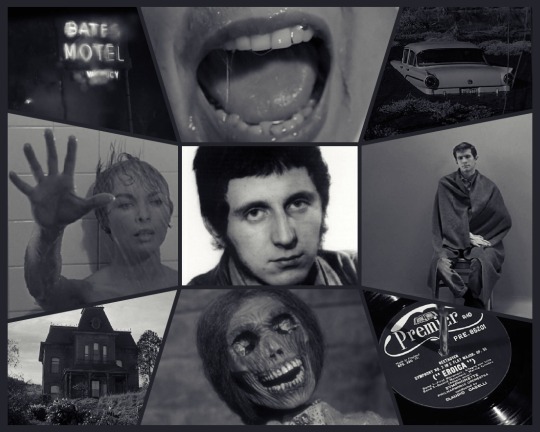
ROGER DALTREY - Rear Window (1954)

KEITH MOON - To Catch a Thief (1955)
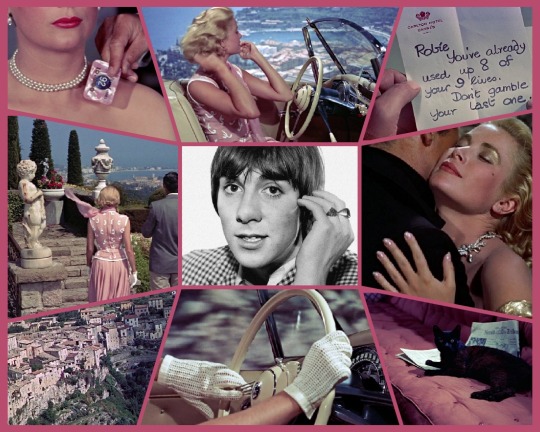
#The Who#Pete Townshend#John Entwistle#Roger Daltrey#Keith Moon#Alfred Hitchcock#classic rock#old hollywood#classic cinema#Vertigo#Psycho#Psycho 1960#Rear Window#To Catch a Thief#James Stewart#Kim Novak#Grace Kelly#Anthony Perkins#Norman Bates#Janet Leigh#Cary Grant#cinema history#50s#60s#movie moodboard
72 notes
·
View notes
Text
there's like this one type of sitcom guy i always like who's like a loser but is really trying to be cool and sometimes is just really annoying and creepy and sometimes just gay. like jean ralphio, tom, jonah ryan, keith shankar, gob bluth, dennis reynolds maybe?
#i feel like mike schur ones except parks and rec (which is heavy with them) dont have those guys#its mostly 2000s? but kate 2000s#like 2009-2012#2012 was where it stopped happening all the sitcoms after that were bright and with Good People#like bee nyne nyne it didnt have those guys#but u cant count hitchcock scully because they werent like young loser guys. they were old loser guys#and they werent miserable in the way jonah or keith was#also ig black mondaybstarted in 2019 but i did say mostly#also no no cop from bee nyne nyne is a good person i just mean like likable characters that we are supposed to thunk are nice people#jotxt
21 notes
·
View notes
Text

this song isn't even prog but it's about barrett so i'll put it on here
it's "the man who invented himself" by robyn hitchcock
i think this commenter is trying to say that both "robyn" and "syd" are unusual spellings of those names with the letter y, and both robyn and syd took acid?
2 notes
·
View notes
Text
LOOK: FALL TV FORECAST
September 17, 1957

Look Magazine (volume 21, #19) featured the 1957 Fall TV Forecast on the cover, including a photograph of Lucille Ball, Desi Arnaz, and Richard Keith (aka Keith Thibodeaux) by Bob Vose.

At the time of publication, “I Love Lucy” had ended its half-hour format and was about to launch an hour-long show airing every other month. It would become known as “The Lucy-Desi Comedy Hour.” Fred, Ethel, and Little Ricky would be back for the new iteration, including the first one, “Lucy Takes A Cruise To Havana” (LDCH S1;E1) in November 1957.

The trio previously appeared on the cover of Look in December 1956, just ten months earlier, also photographed by Bob Vose. Vose was a regular contributor to the magazine.

The article (page 72) was titled Fall TV Forecast: New Labels...Old Ideas.

On page 52, there is question and answer column with Norman Vincent Peale. It is well known that Lucille Ball was an inveterate disciple of Peale’s and strongly believed in his philosophy of living. Lucille and Gary Morton were even married by Dr. Peale (author of the best-seller The Power of Positive Thinking) in an intimate ceremony at his Marble Collegiate Church in November 1961.
Others On The Cover:

Clint Walker and Venetia Stevenson (photo by Maurice Terrell) ~ Walker played the title character in “Cheyenne” a western then entering its third season on ABC. The series continued for seven seasons, ending in 1963. Stevenson did only one episode of the series, in October 1957. The series returned on September 24, 1957.

In 1965 Clint Walker played Frank Winslow, Lucy’s hunky boyfriend, in “Lucy and the Sleeping Beauty” (TLS S4;E9) and “Lucy and Clint Walker” (TLS S4;E24).

Alfred Hitchcock (photo by Maurice Terrell) ~ was also entering his third season on television, as host of the anthology series “Alfred Hitchcock Presents” (1955-62).

In “Lucy Meets the Mustache” (LDCH S3;E3) Lucy wants to open a sealed letter Ricky has written to his Uncle Carlos in Cuba, so she tries a inserting a knitting needle under the flap, a method she says she saw in an Alfred Hitchcock movie. The scene is underscored with “Funeral March of a Marionette” by Charles Gounod, which served as the theme tune of "Alfred Hitchcock Presents”.

Gisele MacKenzie (photo by Philip Harrington) ~ was a Canadian-American singer best known for her appearances on “Your Hit Parade.” She made her last appearance on the show ten days before this issue was published. She premiered “The Gisele MacKenzie Show” on September 28, 1957. The live show ran only one season on NBC.

In November 1952, Gisele MacKenzie and Lucille Ball were both part of “Stars in the Eye” a televised celebration of the opening of CBS Television City in Hollywood. At the time, MacKenzie was a newcomer and Ball was representing “I Love Lucy.” A year before this magazine was published, Lucy, Desi, and MacKenzie were guests on the same “Toast of the Town” with Ed Sullivan.

Perry Como (photo by Philip Harrington) - hosted a weekly hour-long variety show called “The Perry Como Show”, which premiered in September 1955. It was so popular that in the 1956-57 television season it reached ninth in the Nielsen ratings, the only show on NBC that season to land in the top ten. It was then entering its third season and would end in 1959.

In a 1972 episode of “Here’s Lucy” starring pregnant Petula Clark, Lucy insists that that the British songbird be allowed to sit during her recording session, saying that Bing Crosby, Perry Como, and Frank Sinatra all sat down when singing! Early in his career, Como was a spokesman for Chesterfields, Lucille Ball’s favorite brand of cigarettes. The only time they were seen on the same screen was at the 1987 Kennedy Center Honors induction of Como, although Ball was there to introduce fellow honoree Sammy Davis Jr.

NEW TV - FALL 1957
September 14 - Have Gun - Will Travel (1957-63) on CBS
September 18 – Wagon Train (1957–65) on NBC
September 21 – Perry Mason (1957–66) on CBS
September 21 – The Polly Bergen Show (1957-58) on NBC
September 22 – Maverick (1957–61) on ABC
October 3 - The Pat Boone-Chevy Showroom (1957–60) on ABC
October 3 - The Real McCoys (1957-63) on ABC, filmed at Desilu
October 4 – Leave It to Beaver (1957–63) on CBS
October 10 – Zorro (1957–59) on ABC

Click here for more Lucy, Look, Life and Time!
#Look Magazine#Look#Lucille Ball#Lucy#Desi Arnaz#Richard Keith#Keith THibodeaux#Little Ricky#Ricky Ricardo#I Love Lucy#Clint Walker#Perry Como#Gisele MacKenzie#1957#TV#Norman Vincent Peale#Alfred Hitchcock#The Lucy-Desi Comedy Hour
8 notes
·
View notes
Text
Welcome to another edition of Streaming Saturdays, where we embed a free, fabulous movie for you to watch right here!
This week, Ann Sheridan and Dennis O’Keefe star in the noir thriller Woman on the Run, with star-worthy support from Robert Keith and an adorable mutt named Rembrandt. Sheridan co-produced the film not long after buying out her contract from Warner Bros., where they strapped her into a series of ever-tighter sweaters and dubbed her the Oomph Girl—a nickname she detested. (“‘Oomph’ is what a fat man says when he leans over to tie his shoelace in a phone booth.”) She stars as Eleanor Johnson, a bitter, jaded wife whose husband Frank (Ross Elliott) goes on the lam after witnessing a gangland slaying. Which turns out to be the best thing that ever happened to their miserable marriage.
When an inspector (Keith) arrives at the murder scene, he asks Frank if he’s married. “In a way,” he mutters half-heartedly. And that’s actually more enthusiastic than his wife is when the cops show up at their dingy flat, where the only sign of domesticity is a cupboard full of Ken-L Ration. (Like a lot of depressives, they may have given up on their marriage, their lives and themselves, but dammit, they take care of their dog.)
When Frank calls, Eleanor warns him that the police are tapping the line, so he hangs up and hits the road. But she soon learns from the cops—everyone seems to know more about her husband than she does—that he needs heart medicine he may not be able to survive without.
As Eleanor scours San Francisco in search of Frank, she discovers facets of his life she’d never known about: He went to the mat with his boss to save a friend’s job. He inspired a massive crush in a young secretary. He lived like Gaugin in Tahiti and Hemingway in Mexico. And he still loves his wife. That last bit of news comes as a something of a welcome shock to Eleanor. When the inspector tells her that a letter Frank wrote “sounds like a man in love,” she’s knocked a bit backwards with relief—almost allowing herself to feel hopeful. Then she leans in for a closer listen, as if she needs to hear it again.
Helping her on her quest to find her husband is noir regular O’Keefe as an obnoxious-but-charming reporter eager to snag an exclusive (and maybe Eleanor in the bargain). Sheridan has a crackly chemistry with him and with Keith, who seems to have been born craggy.
The whip-smart, cynically romantic script was written by Alan Campbell with an assist from director Norman Foster, who soaked up everything he could about mood, light and shadow from his mentor, Orson Welles. (Foster’s Journey Into Fear, featuring Welles, was so effective that Welles had to reassure skeptics he didn’t direct it himself.)
Campbell knew a thing or two about brittle, wearily witty women, having recently divorced Dorothy Parker. (They remarried afterward; film as couples therapy?) And for his part, Foster endured a rather… complicated marriage to Claudette Colbert (she lived with her mother; he didn’t).
Anyone else notice more than a passing resemblance between Foster and the guy he chose to play the husband?
Woman on the Run is lovingly shot all over San Francisco, which becomes a character in the film. And this isn’t Hitchcock’s glistening city by the bay: it’s docks and dives and dime stores, with the occasional edifying bit of architecture thrown in for good measure. (City Hall doubles as an art gallery.) The film climaxes with a harrowing chase through a spooky seaside amusement park (its one faithless locale: logistics dictated that they shoot at Ocean Park Pier in Santa Monica).
Even The New York Times‘ Bosley Crowther liked the film, kinda: “Since it never pretends to be more than it is, Woman on the Run… is melodrama of solid if not spectacular proportions. Working on what obviously was a modest budget, its independent producers may not have achieved a superior chase in this yarn about the search by the police and the fugitive’s wife for a missing witness to a gangland killing. But as a combination of sincere characterizations, plausible dialogue, suspense and the added documentary attribute of a scenic tour through San Francisco, Woman on the Run may be set several notches above the usual cops-and-corpses contributions from the Coast… will not win prizes but does make crime enjoyable.”
As usual with Crowther’s work, you’re tempted to write “he sniffed” at the end. As best I can figure, there was once some kind of annual prize for who could drip the most condescension, and he was determined to snag it every year running. But I think you’ll like Woman on the Run much more than he did.
youtube
STREAMING SATURDAYS is a semi-regular feature on Sister Celluloid, bringing you free fun film! You can catch up on movies you may have missed by clicking here! And why not bookmark the page to make sure you never miss another?
STREAMING SATURDAYS! The Fabulous Ann Sheridan Is a WOMAN ON THE RUN Welcome to another edition of Streaming Saturdays, where we embed a free, fabulous movie for you to watch right here!
#Alan Campbell#alfred hitchcock#ann sheridan#bosley crowther#classic film#claudette colbert#dennis o&039;keefe#dorothy parker#journey into fear#new york times#norman foster#orson welles#robert keith#san francisco#streaming saturdays#warner bros.#woman on the run
1 note
·
View note